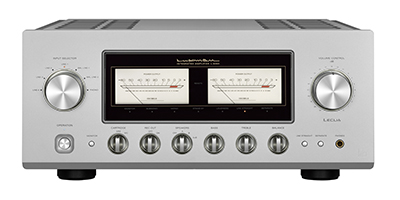The Luxman L-509x Integrated Amplifier More than one way to rock...
By Jeff Dorgay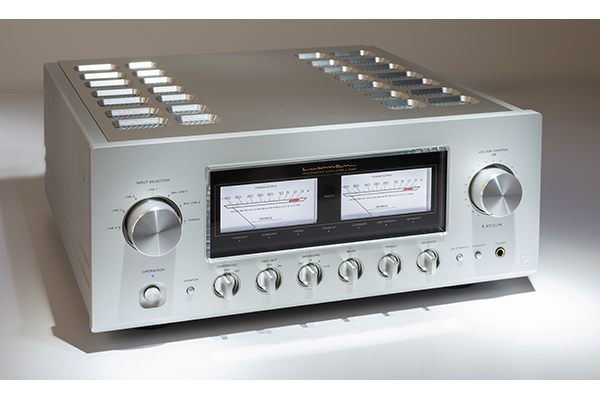 Sammy Hagar once said in a song, “There’s only one way to rock,” but after listening to the new Luxman L-509x, I beg to differ.
Sammy Hagar once said in a song, “There’s only one way to rock,” but after listening to the new Luxman L-509x, I beg to differ.
Luxman actually makes a full lineup of tube and transistor electronics (separates and integrated amplifiers), and should you take the solid-state path, they offer more options. Luxman makes a pair of Class-A integrated amplifiers (the L-550aXII and L-590aXII, with 20 watts per channel and 30 watts per channel into 8 ohms, respectively) and three Class-AB integrateds, all with about 100 – 120 watts per channel into 8 ohms.
This might seem counterintuitive to some, as both sets of amplifiers go from about $4,500 to almost $9,500. The specs look reasonably close, but the three Class-AB amps put out considerably more power into 4 ohms as you go up the range, suggesting bigger power supplies and more robust output stages. The L-509x you see here has a retail price of $9,495.
The fine details
A quick call to Luxman USA’s Jeff Sigmund confirms this, and the more we discuss this group of amplifiers that look nearly identical to a casual observer, are, in fact, very different beneath their outer case. Refinement and the ability to reveal more music with each model is how Luxman prefers to handle things. Core engineering and circuit design are very similar. Still, Sigmund goes into detail explaining to me that (as suspected), the bigger models have bigger power supplies, with bigger power transformers and more power supply storage capacitance. That alone makes for more dynamic range and a lower noise floor. Still, every other aspect of the circuits is also more refined, with tighter tolerance components throughout, more component matching, and more output devices in the power amplifier section.
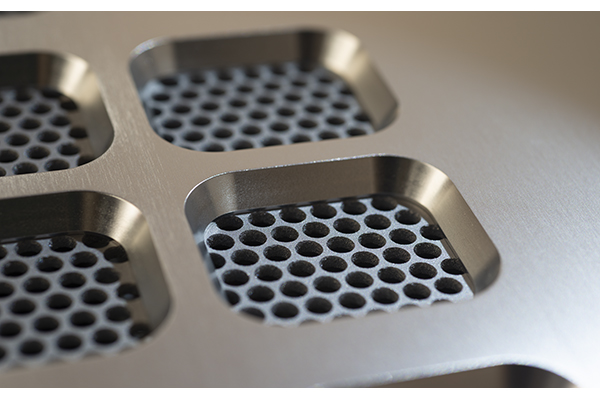 Finally, if you look closer, the fine details in the casework improve in the top models of the series, with the L-509x having the same machined casework as the flagship separates. Giving away the conclusion, all of these amplifiers make a solid argument for going the integrated route. For all but the most finicky audiophiles, these are incredible amplifiers, the L-509x even more so.
Finally, if you look closer, the fine details in the casework improve in the top models of the series, with the L-509x having the same machined casework as the flagship separates. Giving away the conclusion, all of these amplifiers make a solid argument for going the integrated route. For all but the most finicky audiophiles, these are incredible amplifiers, the L-509x even more so.
The biggest problem you’ll have is deciding whether you want a high current Class-A amplifier or a Class-AB amplifier. Having listened to the L-509x for some time and owning the last generation L-590aX (the one that got away), this will be a tough call for some, and an easy decision for others. If your speakers are slightly less efficient and you like to listen louder than most, the 509x may be your only choice. Assuming you’ve made that choice, let’s move on.
Further functionality
The L-509x borrows heavily from the design of the C-900u preamplifier, featuring the same LECUA 1000 volume control. Luxman refers to it as the “Luxman Electrically Controlled Ultimate Attenuator,” bringing a level of control and precise volume adjustment to the mix, along with the same ODNF amplification technology. You can read a little more about that here on the Luxman website. All of the controls and the tone controls – this is a Luxman, after all, feel damped, heavy, and luxurious. The casework is exquisitely finished, with a bead-blasted, clear anodized finish. The other telltale sign that this is Luxman’s flagship integrated amplifier are the white LED power output meters, where the Class A amplifiers have yellow meters, and the other Class AB amplifiers feature blue meters.
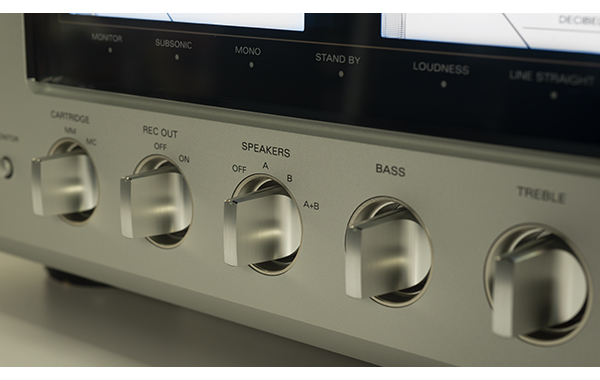 In addition to the polarizing (for some) tone controls, the L-509x has a bevy of other cool and useful features. The onboard headphone amp is excellent – some personal listening with the top of the line Focal Utopia phones and the latest Dianas from Abyss confirm its performance on par with any external headphone amplifier in the $1,500 – $2,000 range. The L-509x has more than enough performance for all but the most fanatical headphone users.
In addition to the polarizing (for some) tone controls, the L-509x has a bevy of other cool and useful features. The onboard headphone amp is excellent – some personal listening with the top of the line Focal Utopia phones and the latest Dianas from Abyss confirm its performance on par with any external headphone amplifier in the $1,500 – $2,000 range. The L-509x has more than enough performance for all but the most fanatical headphone users.
The built-in MM/MC phono stage lists a sensitivity of .3mv with a 100-ohm load, which should suffice for a relatively wide range of premium phono cartridges. Mating it with our reference Luxman PD-171A turntable and Kiseki Purple Heart cartridge, which works splendidly at 100-ohm loading, proves to be an excellent match. The only complaint here is that at nearly 10k, it would have been nice to have a few loading options – not everyone has a cartridge optimized for 100 ohms. A 50, 200, and 500-ohm setting accessible from the front panel would be the last 2% of perfection on the L-509x, especially at almost ten grand.
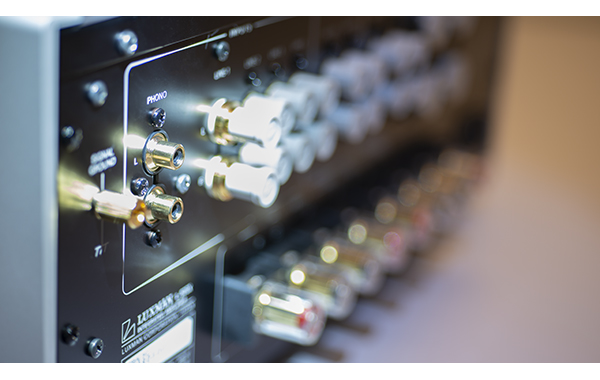 Finally, in addition to four line-level RCA inputs, there are two balanced XLR inputs, a tape/record loop, pre in/main out jacks, and a pair of speaker outputs (switchable from the front panel.) Nothing else is left to chance, making the L-509x incredibly versatile.
Finally, in addition to four line-level RCA inputs, there are two balanced XLR inputs, a tape/record loop, pre in/main out jacks, and a pair of speaker outputs (switchable from the front panel.) Nothing else is left to chance, making the L-509x incredibly versatile.
Less talk, more rock
Listening begins in our living room with the second from Focal’s flagship – the $149k/pair Stella Utopia EM speakers. Combining 120 watts per channel, speakers that feature 94db/1-watt sensitivity, and UFO’s version of the classic Robin Trower track “Too Rolling Stoned” proves beyond a doubt that this amplifier can really rock. The power meters are barely moving, and the big Focals are already at loud party levels, with no sense of strain at all.
Staying in the classic guitar rock groove, Led Zeppelin’s first two albums are played from vinyl, and again show off the sheer dynamic capability this integrated possesses. It’s always tough to remember how everything sounds, putting the Luxman 900 series separates in perspective, the L-509x is similar tonally.
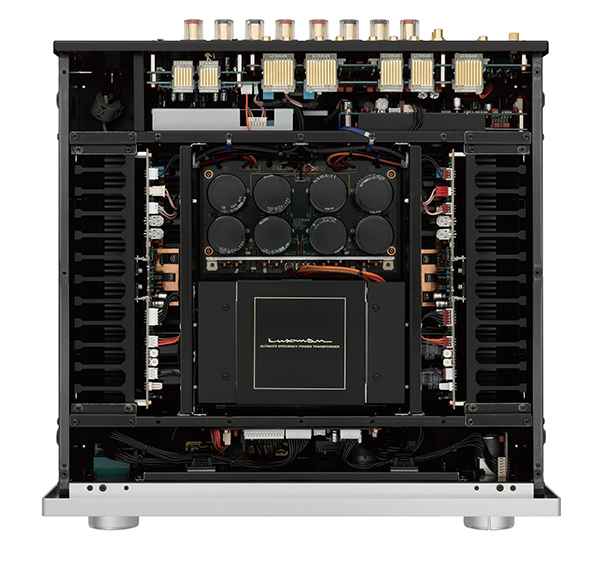 For argument and sake of reference point, if you were to put Boulder amplifiers (and we still had the 1100 series here for comparison) as straight-up natural at 12 o’clock – adding nor subtracting nothing, with no sense of added tonal saturation, our reference Pass XS Pre/XA 200.8 is probably at about 10:30. With going to the left a bit on the warm/saturated side. The Luxman 900 series was about 11:30, with our tube references the PrimaLuna EVO 400 and VAC i170 coming in at about 9:00 and 9:30. I’d put the recent Esoteric integrated about 12:30 – slightly to the cold side, and the last few Simaudio amplifiers we’ve reviewed about 1:00 – even more clinical. The L-509x, like it’s larger separates has that same touch of warmth/saturation, without being slow or non-resolving. I wish I would have had the ability to listen to them both side-by-side and suspect that the L-509x comes very, very close to the 900 series in terms of sonic performance.
For argument and sake of reference point, if you were to put Boulder amplifiers (and we still had the 1100 series here for comparison) as straight-up natural at 12 o’clock – adding nor subtracting nothing, with no sense of added tonal saturation, our reference Pass XS Pre/XA 200.8 is probably at about 10:30. With going to the left a bit on the warm/saturated side. The Luxman 900 series was about 11:30, with our tube references the PrimaLuna EVO 400 and VAC i170 coming in at about 9:00 and 9:30. I’d put the recent Esoteric integrated about 12:30 – slightly to the cold side, and the last few Simaudio amplifiers we’ve reviewed about 1:00 – even more clinical. The L-509x, like it’s larger separates has that same touch of warmth/saturation, without being slow or non-resolving. I wish I would have had the ability to listen to them both side-by-side and suspect that the L-509x comes very, very close to the 900 series in terms of sonic performance.
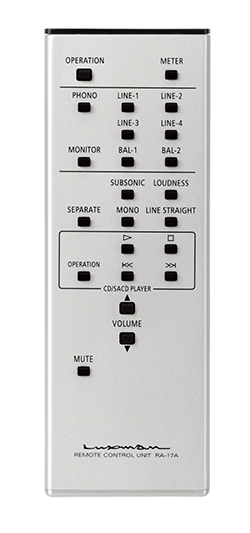 Of course, the separates have more flexibility and refinement. The 900 series amplifier can be bridged and used as a monoblock in case you crave even more power – another plus. Since my two main reference speakers are reasonably sensitive, I could easily live with the L-509x as a system anchor, and not long for anything else. Anyone wanting the finesse of top range separates, not wanting to be bothered with the complexity required by separates, should have the L-509x at the top of their list. This amplifier gives little away in sheer musicality to the Luxman separates unless you have terribly inefficient speakers, or really need to raise the roof in your listening room.
Of course, the separates have more flexibility and refinement. The 900 series amplifier can be bridged and used as a monoblock in case you crave even more power – another plus. Since my two main reference speakers are reasonably sensitive, I could easily live with the L-509x as a system anchor, and not long for anything else. Anyone wanting the finesse of top range separates, not wanting to be bothered with the complexity required by separates, should have the L-509x at the top of their list. This amplifier gives little away in sheer musicality to the Luxman separates unless you have terribly inefficient speakers, or really need to raise the roof in your listening room.
A quick speaker swap to the Sonus faber Stradiveris reveals the same level of nuance, control, and natural tonality that the Focals do, with the personality of each speaker intact. There’s definitely some overlap in the voicing of the L509x and the Class A amplifiers. Looking at how much power this amplifier draws from the line when idling (about 140 watts, going up to almost 400 at full power), suggesting the L-509x might be pretty heavily biased into Class A mode at low to modest power.
Listening to bass-heavy material, the L-509x offers excellent weight and grip, underlining it’s outstanding dynamic capabilities. This amplifier provides an equally extended and resolute top end to match. Perhaps the bigger agony is not choosing between the L-509x and separates, but between the L-590aXII Class A amplifier and the L-509x. The former has more sheer dynamic drive, yet the class A amplifier slightly sweeter and possessing a touch more inner detail – a hallmark of the class A design.
So in the end, there is more than one way to rock.
www.luxmanamerica.com



